EAHR presents Time Capsule exhibition for 200 years from now Kaleidoscopic Futures 20 March to 06 April 2023 Vitrine Exhibition Curators Salvatore Magliocca, Xaviera Meza-Wong, and Nicholas Linh Writers: Maria Aouad, Meghan Leech, Shanen Louis, and Béatrice Poulin Department of Art History Concordia University 1515 de Maisonneuve Blvd., W. 3rd Floor (near the Art History Offices, across from 3.760) Wheelchair accessible; open to the public during regular business hours The Ethnocultural Art Histories Research Group (EAHR) is proud to launch of the Department of Art History vitrine exhibition Kaleidoscopic Futures: A Time Capsule for the Year 2222 featuring the work of artists Sophia Al-Maria, Jesse Tungilik, Camille Turner, Yannis Davy Guibinga and Pauline Loctin. Running 20 March through 6 April 2023, the the exhibition is curated by three students from Dr. Alice Ming Wai Jim’s ARTH 389: Issues in Ethnocultural Art Histories: Ethnic Futurisms and Contemporary Art (fall 2022).with texts by four additional students in the class. This exhibition is a culmination of reflections that emerged from the course which invited students to critically explore ethnic futurisms in contemporary art, particularly those that engage with speculative futurities: imagined future worlds created for and by Indigenous, Black, Asian, and other people of colour, where they not only survive but thrive. Similarly this vitrine exhibition brings together four artists of Qatari, Inuit, Jamaican, Gabon, and French ancestry and based across four different cities across the world that critically speculate on fantastic futures where racialized people flourish.
Kaleidoscopic Futures: A Time Capsule for the Year 2222, is open to the public to visit in person at Concordia’s Art History Vitrine, EV Building,3rd floor, near the Art History Offices, across from 3.760. We acknowledge that Concordia University is located on unceded Indigenous lands. The Kanien’kehá:ka Nation is recognized as the custodians of the lands and waters on which we gather today. Tiohtià:ke/Montréal is historically known as a gathering place for many First Nations. Today, it is home to a diverse population of Indigenous and other peoples. We respect the continued connections with the past, present and future in our ongoing relationships with Indigenous and other peoples within the Montréal community.
0 Comments
Want an inside look at the art offerings of the nation’s capital?
When: February 4, 2023 @ 8am-8pm Tickets are only $17! (Free for Indigenous students!) After a two-year pause, Concordia’s Ethnocultural Art Histories Research (EAHR) annual Ottawa bus trip is back on! Open to all students and faculty, and as always LGBTQ+ and BIPOC students are especially welcome. Join us on guided tours to critically engage with art. National Gallery of Canada ( specially-organized curator tour included) John Akomfrah: Vertigo Sea 2022 Sobey Art Award Exhibition Movement: Expressive Bodies in Art … and many more exhibitions Ottawa Art Gallery (self-guided visit) ᓯᑯ ᕿᕐᓂᖅᓯᓯᒪᔪᖅ | Dark Ice A Family Palette Carleton University Art Gallery (specially-organized curator tour included) Drawing on our History With artists Gayle Uyagaqi Kabloona, Kablusiak, Mélanie Myers, Nalakwsis, Sharon Norwood, Jay Odjick, Jagdeep Raina and Marigold Santos (Concordia 2011) Curated by Anna Khimasia, Alexandra Kahsenni:io Nahwegahbow, Kosisochukwu Nnebe, Danielle Printup, Heather Anderson, Sandra Dyck and Concordia’s Department of Art History Professors Alice Ming Wai Jim and Heather Igloliorte. Tickets: Limited seats; first-come, first served Sign up: https://www.eventbrite.com/e/ottawa-exhibition-bus-trip-tickets-487220458507 This event has been made possible with the support of: Department of Art History, Concordia University EAHR (Ethnocultural Art Histories Research Group) CUJAH (Concordia Undergraduate Journal of Art History) AHGSA (Art History Graduate Student Association) Joint Interuniversity PhD Program in Art History, Concordia University, Université de Montréal, and the Université du Québec à Montréal Inuit Futures in Arts Leadership: The Pilimmaksarniq/Pijariuqsarniq Project at Concordia University Indigenous Futures Research Centre Concordia University is located on unceded Indigenous lands. The Kanien’kehá:ka Nation is recognized as the custodians of the lands and waters on which we gather today. Tiohtiá:ke/Montreal is historically known as a gathering place for many First Nations. Today, it is home to a diverse population of Indigenous and other peoples. We respect the continued connections with the past, present and future in our ongoing relationships with Indigenous and other peoples within the Montreal community. Written by: Unsettling Settlers: Intervention game by Golboo Amani Game played November 4th 2022. Games are one of the oldest leisure activities with artifacts dating as far back as 7,000 years. As ready-made sites of peer-produced aesthetic experiences, games are imbued with a competitive/cooperative intention, designed to develop skills and strategies through social engagement. They often serve as a tool of social pedagogy and performance analysis. Games offer spaces to experiment and practice taking risks, cutting losses, and developing strategies with less at stake than in real life. They offer a landscape for particular kinds of performativity; calling on us to maneuver in an imagined field, invested as both creator and audience. Yet, proficiency and success require players to adopt the presupposed conditions of the game, begging the question: What skills are we refining when we play by the rules? Unsettling Settlers: Intervention game is a collective response to the popular board game Settlers of Catan (re-named CATAN). By appropriating the format of a CATAN “expansion pack”, the artist facilitated the development of Unsettling Settlers: Intervention game by utilizing social practice methodologies focused on collective research and co-creation. Inspired by open-source frameworks prioritizing free access, co-authorship, and ongoing development through community contributions, the process of creating Unsettling Settlers: Intervention game included over two years of play test sessions and consultations with hundreds of community members. Unsettling Settlers: Intervention game aims to carve out a space where participants get to choose their own adventure, practice strategies, experiment with critical alternatives and engage in counter-hegemonic narratives of settlement. The intervention is designed to disrupt our expectations and question the impact of our strategies. Photo by: Sarah Piché Playing On Friday November 4th, EAHR hosted our first ever game night! The event was centered around Golboo Amani’s Unsettling Settlers: Intervention game.The night was a success, with students and staff from various faculties attending. It served as a bonding experience between Concordia’s many departments, as well as a space to reflect on how colonialism and imperialism are embedded in modern culture of play and competition. The artist’s game expands the gameplay by separating the players into allies and settlers, changing the rules, and adding ally resources and actions. The special actions could only be accomplished by the allies working collaboratively, these actions included interventions such as roadblocks, treaties and land reclamation. As a whole, the Amani’s artist game seeks to remove power from the settlers and encourage teamwork within the group as a whole. In our discussions, we have noticed that Unsettling Settlers: Intervention game is designed to drastically change the goal of Catan. As those who are familiar with the game may already know, Catan is won by collecting ten victory points through the accumulation (read: hoarding) of resources that allow a player to expand their territory and build new cities. This, in turn, creates a very competitive setting where sabotage and greediness is encouraged and necessary to win the game. With Unsettling Settlers: Intervention game, there is an emphasis on trade and cooperation in order to achieve success. The addition of the allies shows the baffling difference between competition and cooperation, juxtaposing the vastly different approaches to gameplay. The allies are obliged to- and find joy in-- working together and sharing their collected resources to accumulate points acquired through special actions. This encouragement to co-exist rather than compete is our first primary takeaway. The result of this is the introduction to a different way of thinking about game strategy. The second primary takeaway of the game-play is it is much more fun to play as the allies; with the chance to talk amongst ourselves and plan together it feels less isolated than being a settler. Speaking of isolation, there is also a noticeable difference in the dialogue between settlers and that of the allies. An ally needs to speak with their teammate to coordinate moves and strategy. On the opposite end, settlers tend to keep their strategy a secret for leverage so other players do not get in the way of their expansion plans. We noticed how easy it was for Allies to share compared to the Settler counterparts. This is true for information, ideas, and resources. This discrepancy is most apparent when confronted with a crisis (one of the tools introduced in the expansion pack). The crisis cards can be picked by either settlers or allies and affect the player who picked it up, preventing them from picking up resources. In order to resolve a crisis you need to spend both ally and settler resources (the resources from the original game). When an ally received a crisis card it was all hands on deck, with everyone happily giving the resources to help out their teammate. In comparison, a settler was more-or-less left to the wolves. Because they could only find the resources they needed through trade, or sheer luck, it took them a lot longer to resolve a crisis. In comparison, an ally could rectify their crisis almost immediately, thanks to the collaborative nature of their group. . Conclusion
Unsettling Setters: Intervention circulates as both an artist multiple and as an interactive event. Players work through strategies of allyship by trading and collecting renewable resources, resisting unregulated development, building treaties, and reclaiming land on the existing landscape of Catan. The artist-multiple, while providing collectors and gamers with a personal version of the game, reiterates the intentions behind the game to unsettle our expectations as artist settlers by redirecting proceeds made through sales to Indigenous communities and organizations. Unsettling Settlers: Intervention Game by Artist November 4, 2022, 4-7 PM Concordia University 1515 Ste Catherine blvd. West At the Gail Stephen A. Jarislowski Institute for Canadian Art EV 3.711-3.725 Free and no registration required! Wheelchair accessible. If you are interested in exploring art and media that disrupt dominant narratives, please join the Ethnocultural Art Histories Research Group (EAHR) for a community building Game Night! We will be playing Golboo Amani’s Unsettling Settlers: Intervention Game which “aims to interrupt the colonial narrative of Settlers of Catan to employ strategies that strengthen players ability to imagine critical alternatives and practice counter hegemonic narratives of settlement on the landscape.”* Considering Amani’s art game as a “ready-made site of performativity,” Game Night offers a unique and collaborative opportunity for decolonizing through game research. Together, we will be looking at how this intervention method can confront or re-script colonial narratives and foster inclusive communities. We’ll also roll out upcoming EAHR activities you might be interested in helping out on. *http://golbooamani.com/Unsettling-Settlers-Intervention-Game
Drop by the Gail and Stephen A. Jarislowsky Institute for Studies in Canadian Art located on the third floor of the EV building (EV 3.711-3.725) on November 4 between 4:00 pm and 7:00 pm4-7 to play a few rounds, talk about the experience, and learn about decolonizing art history through game play at the same time!. .Game snacks provided of course! Ethnocultural Art Histories Research (EAHR) is a student-driven research community based within the Department of Art History at Concordia University (Montreal, QC). Since summer 2011, EAHR has facilitated opportunities for exchange and creation through a series of programs and events in order to critically engage with issues of ethnic and cultural representation within the visual arts in Canada. EAHR’s activities are made possible with the generous support of the Gail and Stephen A. Jarislowsky Institute for Studies in Canadian Art, the Department of Art History, and other partners.
AFROFUTURISM AND THE PLURIVERSE OF SANKOFANOLOGY |
| Concordia University, York Auditorium, EV.1.605 EV Building, 1515 Ste Catherine Blvd., W. Free admission Wheelchair accessible | To attend online, register on Zoom: https://bit.ly/3dQaPVu No registration is required to attend in person. |
Concordia University is located on unceded Kanien'kehá:ka traditional territory.
Photo: Jose San Juan
Breaking down the metaphoric meta-narratives and subtext in his Afrofuturistic work, Quentin VerCetty will discuss ways in which he explores Afrofuturism's relation to the Pluriverse. He will also give an interactive augmented reality demonstration of how he uses his art to encourage ideas around social change.
Quentin VerCetty (MAAE 2020, Concordia) is an award-winning multidisciplinary storyteller and an ever-growing interstellar tree. He is one of the world's leading Afrofuturistist A-R-Tographers, a founding member of the international Black Speculative Arts Movement, and is the first artist to be commissioned by Carnegie Hall for their 2022 Afrofuturism music festival.
Organized by the Ethnocultural Art Histories Research Group (EAHR) and presented in collaboration with the Department of Art History and the SSHRC-funded project “Afrofuturism in the Canadian Art Scene.” EAHR’s activities are made possible with the generous support of The Gail and Stephen A. Jarislowsky Institute for Studies in Canadian Art and the Concordia University Research Chair in Ethnocultural Art histories. https://www.ethnoculturalarts.com.
Wednesday, April 13th, 1:15-3:00 PM (In-Person)
All are welcome; but registration is required
All are welcome; but registration is required
Wednesday, April 13th, 12:15-1:30 PM (Hybrid Event)
Open to public, registration required
Open to public, registration required
FROM APRIL 1ST TO DECEMBER 2022
The Ethnocultural Art Histories Research Group (EAHR) is proud to announce the launch of the virtual exhibition Diaspora Reframed: Locating Identities presented in collaboration with students of ARTH 389: Issues in Ethnocultural Art Histories: Race, Citizenship and Art in Canada (fall 2021) and hosted by the Department of Art History’s La Vitrine at Concordia University. This exhibition features written texts about selected works by Laurena Finéus, Marigold Santos, Dominique Fung and Shellie Zhang. This exhibition is a conjoined project to share, written pieces (wall texts) and reflections that emerged within the context of the class, as they encouraged students to critically examine the politics of representation, redress and recognition in Canadian art, focusing (not exclusively) on contemporary praxis by artists of Asian and African descent.
The curatorial committee formed by undergraduate students Naimah-Bint Amin, Ali Byers, Rhys Buhl, Kelsey McGowan, Billie Palmer, and Kioni Sasaki-Picou enrolled in ARTH 389 during the fall of 2021 selected four texts written by their classmates to be featured in this virtual exhibition. Under their curatorial vision, all the texts and respective artworks have been grouped to expand course conversations, making Diaspora Reframed: Locating Identities a space for discussion and reflection that transcends the classroom’s walls.
The authors of the selected wall texts, Alessandra Calovi, Camille-Anh Goulet, Kelsey McGowan, and Mayaan Ben Porat, have beautifully and critically responded to the artworks of four contemporary female artists from Turtle Island: Laurena Finéus, Marigold Santos, Dominique Fung and Shellie Zhang, of Haitian, Filipino and Chinese ancestry respectively. The artists’ practices challenge a colonial gaze that has long dictated the selfhood of racialized migrant communities.
EAHR’s activities are made possible with the support of The Gail and Stephen A. Jarislowsky Institute for Studies in Canadian Art, the Department of Art History, and the Concordia University Research Chair in Ethnocultural Art Histories.
Diversifying Academia at Concordia: EAHR Research Residency
Fourth The Ethnocultural Art Histories Research Group (EAHR) Research Residency in Collaboration with:
Concordia Libraries (John Latour)
The Department of Art History
Program Description
The EAHR Research Residency Diversifying Academia at Concordia University, in its 2022 iteration, invites the resident to respond to the existing gap in the library on South and Southeast Asia bibliography and authors. The focus on this region will allow the resident to reflect on “what does Global South mean?” while researching for academic sources that will be proposed to become part of Concordia Library’s collection. This residency encourages scholarly critical engagement in relation to the ethnic and cultural representation of South and Southeast Asia within Canada’s visual arts; aligning with EAHR’s commitment to explore issues of cultural representation with a hemispheric approach within Art History research.
This residency is a self-directed program that provides the resident with the opportunity to work independently in the library’s online collection with the guidance of John Latour (Teaching & Research Librarian - Fine Arts) and the constant mentoring of MA level students from the department (EAHR members). The resident will write an article justifying the selections of books and their reflections of the residency’s theme, which will then be shared with the student body through EAHR’s virtual platforms.
For this year’s residency we have invited Naimah Amin, an undergraduate student in the Painting and Drawing program at Concordia.
Bio
Naimah Amin is an artist interested in how cultural objects carry different meanings throughout lifetimes as they, with the body, form the focal point of her pieces. Her paintings and drawings explore the fine dialectic of identity and memory, employing photographs as an integral tool to image-making. Naimah is interested in learning about contemporary racialized artists and examining their multifaceted identities under a decolonial lens.
Duration
Term of maximum 5 weeks (total of 25 hours). Dates are not predetermined but are nominated by the applicant between March-April.
Location
Online
The invited research resident will be required to:
★ Propose a number of sources to be added to the Concordia Libraries based on their research, within the proposed book fund budget;
★ Create an annotated bibliography of each of the proposed sources;
★ Write an article justifying their research findings in relation to the residency’s theme, and develop a way to visualize and communicate the research and acquisition of new library sources in the Webster library to inform the student body of this intervention.
★ Have an orientation session with John Latour
The proposed research residency would offer:
★ An honorarium of $500;
★ Access to a $500 book fund to purchase sources for the Concordia Libraries;
★ Access to resources and guidance in their research from John Latour, Concordia Art History Librarian;
★ Publication of their annotated bibliography and article on EAHR’s website
The goals of the research residency, with respect to EAHR’s mandate, would be:
★ To exercise how the study of art history can contribute to the diversification of course curriculums and make real, tangible changes in the Concordia Libraries;
★ To provide funded opportunities for undergraduate and graduate art history researchers that promotes the study of ethnic and cultural art histories;
★ To give a voice to the research through creative projects that incite participation and attention from students and faculty at Concordia University;
★ And to restructure power relations with regards to access to knowledge and ethnic minority representation in academia.
Fourth The Ethnocultural Art Histories Research Group (EAHR) Research Residency in Collaboration with:
Concordia Libraries (John Latour)
The Department of Art History
Program Description
The EAHR Research Residency Diversifying Academia at Concordia University, in its 2022 iteration, invites the resident to respond to the existing gap in the library on South and Southeast Asia bibliography and authors. The focus on this region will allow the resident to reflect on “what does Global South mean?” while researching for academic sources that will be proposed to become part of Concordia Library’s collection. This residency encourages scholarly critical engagement in relation to the ethnic and cultural representation of South and Southeast Asia within Canada’s visual arts; aligning with EAHR’s commitment to explore issues of cultural representation with a hemispheric approach within Art History research.
This residency is a self-directed program that provides the resident with the opportunity to work independently in the library’s online collection with the guidance of John Latour (Teaching & Research Librarian - Fine Arts) and the constant mentoring of MA level students from the department (EAHR members). The resident will write an article justifying the selections of books and their reflections of the residency’s theme, which will then be shared with the student body through EAHR’s virtual platforms.
For this year’s residency we have invited Naimah Amin, an undergraduate student in the Painting and Drawing program at Concordia.
Bio
Naimah Amin is an artist interested in how cultural objects carry different meanings throughout lifetimes as they, with the body, form the focal point of her pieces. Her paintings and drawings explore the fine dialectic of identity and memory, employing photographs as an integral tool to image-making. Naimah is interested in learning about contemporary racialized artists and examining their multifaceted identities under a decolonial lens.
Duration
Term of maximum 5 weeks (total of 25 hours). Dates are not predetermined but are nominated by the applicant between March-April.
Location
Online
The invited research resident will be required to:
★ Propose a number of sources to be added to the Concordia Libraries based on their research, within the proposed book fund budget;
★ Create an annotated bibliography of each of the proposed sources;
★ Write an article justifying their research findings in relation to the residency’s theme, and develop a way to visualize and communicate the research and acquisition of new library sources in the Webster library to inform the student body of this intervention.
★ Have an orientation session with John Latour
The proposed research residency would offer:
★ An honorarium of $500;
★ Access to a $500 book fund to purchase sources for the Concordia Libraries;
★ Access to resources and guidance in their research from John Latour, Concordia Art History Librarian;
★ Publication of their annotated bibliography and article on EAHR’s website
The goals of the research residency, with respect to EAHR’s mandate, would be:
★ To exercise how the study of art history can contribute to the diversification of course curriculums and make real, tangible changes in the Concordia Libraries;
★ To provide funded opportunities for undergraduate and graduate art history researchers that promotes the study of ethnic and cultural art histories;
★ To give a voice to the research through creative projects that incite participation and attention from students and faculty at Concordia University;
★ And to restructure power relations with regards to access to knowledge and ethnic minority representation in academia.
TTTM Collaborators (Critical Race Museology Cluster):
· Alice Ming Wai JIM (Professor, Art History, Concordia University)
· Laura VIGO (Curator for the Arts of Asia, Montreal Museum of Fine Arts)
TTTM Research Assistant: Varda NISAR, PhD Art History Student
Containing over 10,000 archaeological objects and works by artists from many different cultures, the Montreal Museum of Fine Arts’ world art (non-European or American) collection is one of the oldest and most prestigious in Canada. In November 2019, the collection’s ten galleries constituting the Stéphan Crétier and Stéphany Maillery Wing were completely refurbished and unveiled to the public. The new permanent displays are devoted to the Arts of One World exhibition, an innovative intercultural and transhistorical presentation of ancient to contemporary art.
The GAHP research project interrogates the so-called “encyclopedic” museum in the 21st century with the aim to develop new methodologies for digitally mediated experiences produced by the museum, including collaborative design of mobile apps in response to selected canonical objects in the exhibition. The project considers how participating in this form of cultural mediation and community engagement as content producers is an integral, key method in global art histories pedagogy to address implicit biases and systemic issues early in the design of art historical research projects as well as increase visitor appreciation of diverse arts and culture. Issues such as feminism, Indigeneity, and queer identities through the lens of critical race museology from global, transnational, and transcultural perspectives will be considered.
· Alice Ming Wai JIM (Professor, Art History, Concordia University)
· Laura VIGO (Curator for the Arts of Asia, Montreal Museum of Fine Arts)
TTTM Research Assistant: Varda NISAR, PhD Art History Student
Containing over 10,000 archaeological objects and works by artists from many different cultures, the Montreal Museum of Fine Arts’ world art (non-European or American) collection is one of the oldest and most prestigious in Canada. In November 2019, the collection’s ten galleries constituting the Stéphan Crétier and Stéphany Maillery Wing were completely refurbished and unveiled to the public. The new permanent displays are devoted to the Arts of One World exhibition, an innovative intercultural and transhistorical presentation of ancient to contemporary art.
The GAHP research project interrogates the so-called “encyclopedic” museum in the 21st century with the aim to develop new methodologies for digitally mediated experiences produced by the museum, including collaborative design of mobile apps in response to selected canonical objects in the exhibition. The project considers how participating in this form of cultural mediation and community engagement as content producers is an integral, key method in global art histories pedagogy to address implicit biases and systemic issues early in the design of art historical research projects as well as increase visitor appreciation of diverse arts and culture. Issues such as feminism, Indigeneity, and queer identities through the lens of critical race museology from global, transnational, and transcultural perspectives will be considered.
Archives
March 2023
January 2023
December 2022
October 2022
April 2022
February 2022
November 2021
October 2021
September 2021
May 2021
March 2021
December 2020
October 2020
September 2020
June 2020
February 2020
November 2019
October 2019
May 2019
March 2019
January 2019
November 2018
October 2018
September 2018
July 2018
May 2018
April 2018
March 2017
December 2016
September 2016
March 2016
February 2016
April 2015
November 2014
September 2014
March 2013
Categories
All
Call Out
Call-Out
Conference
Exhibition
Lecture
Research
Workshop

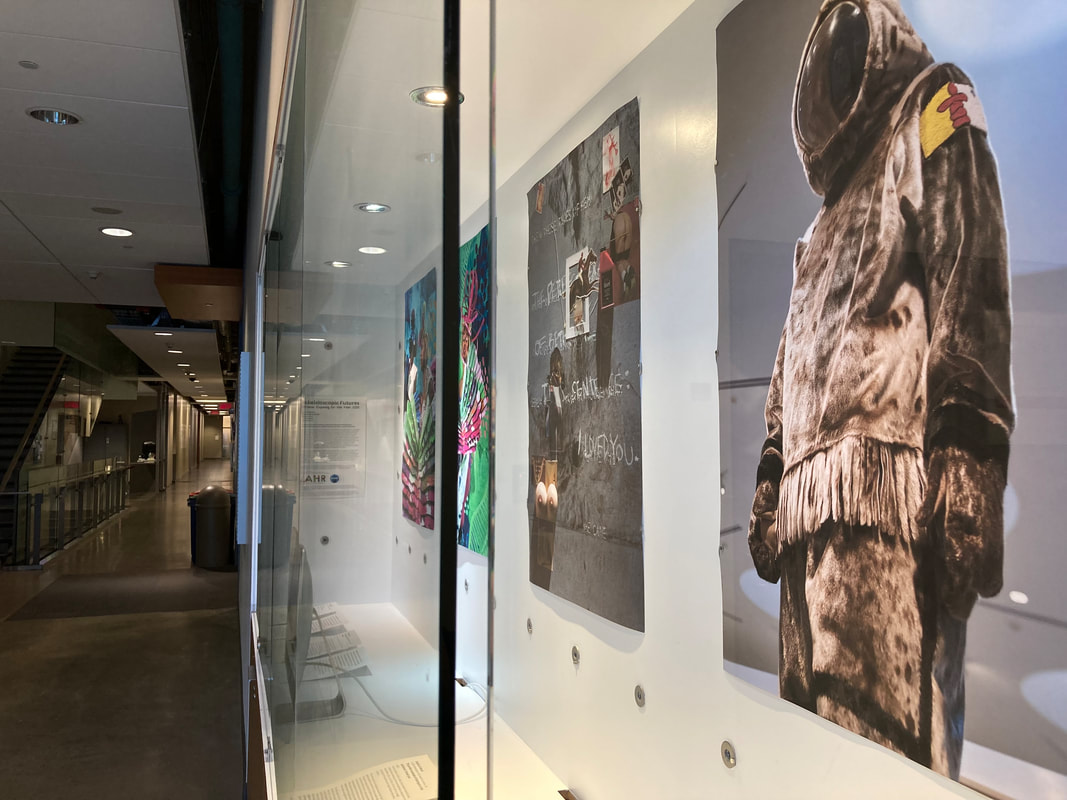
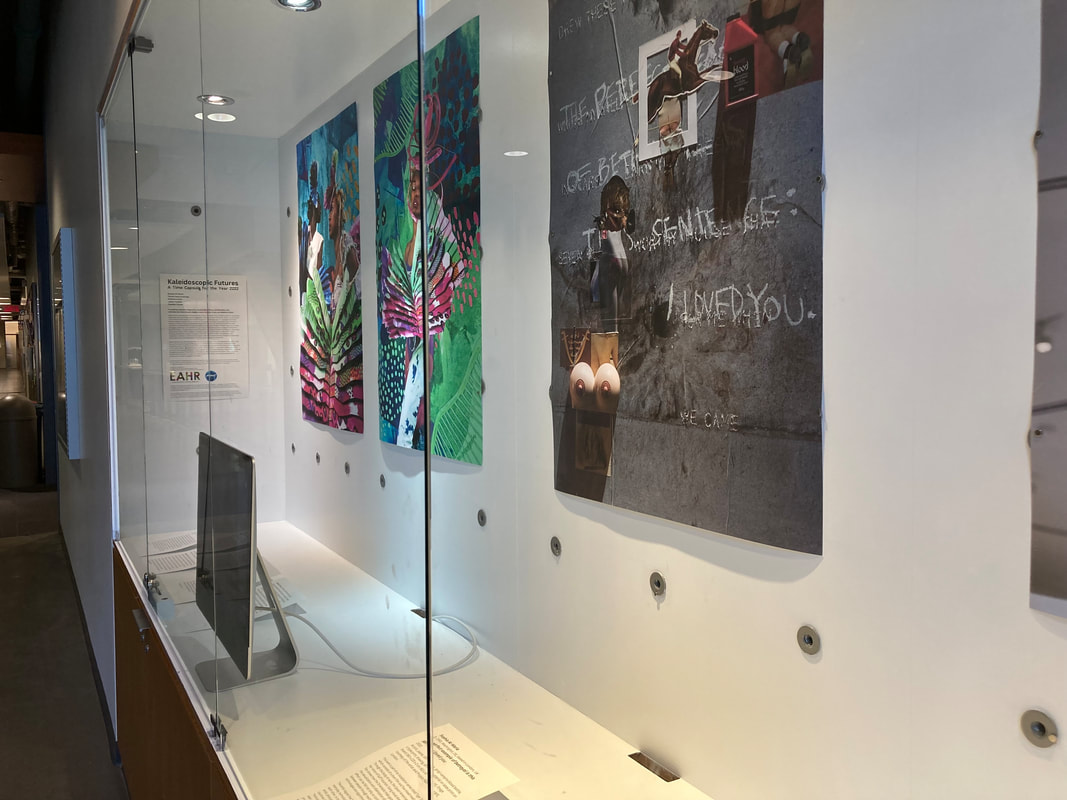
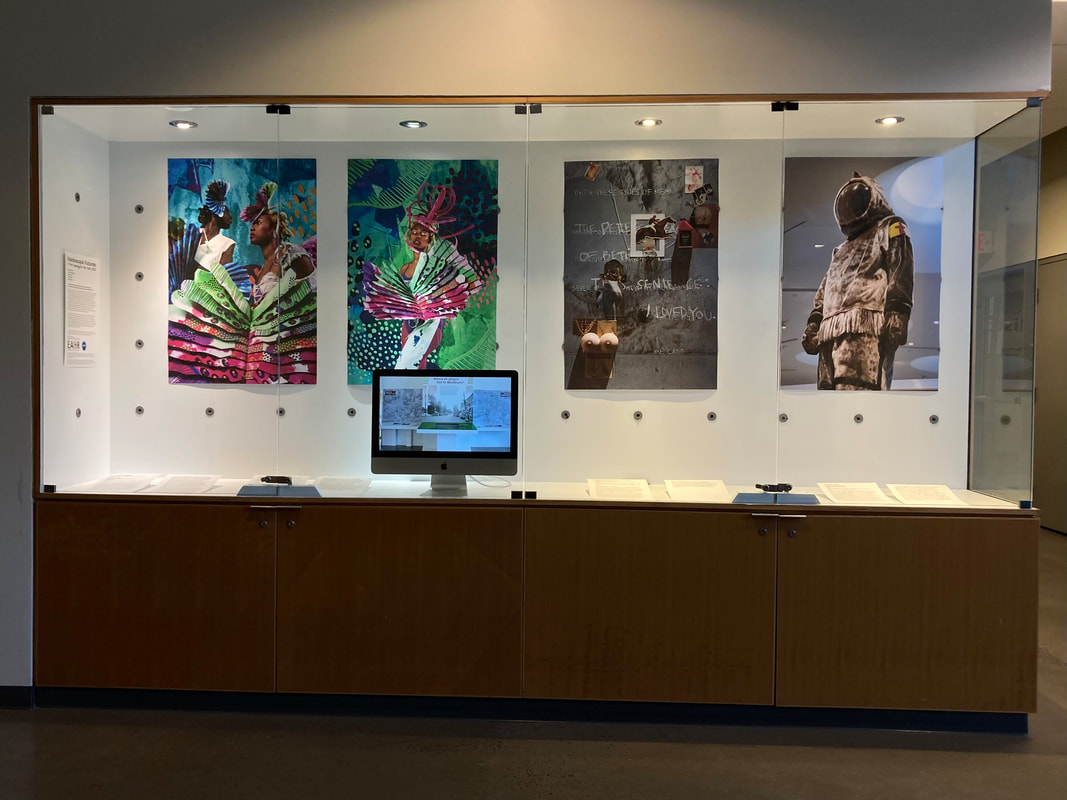
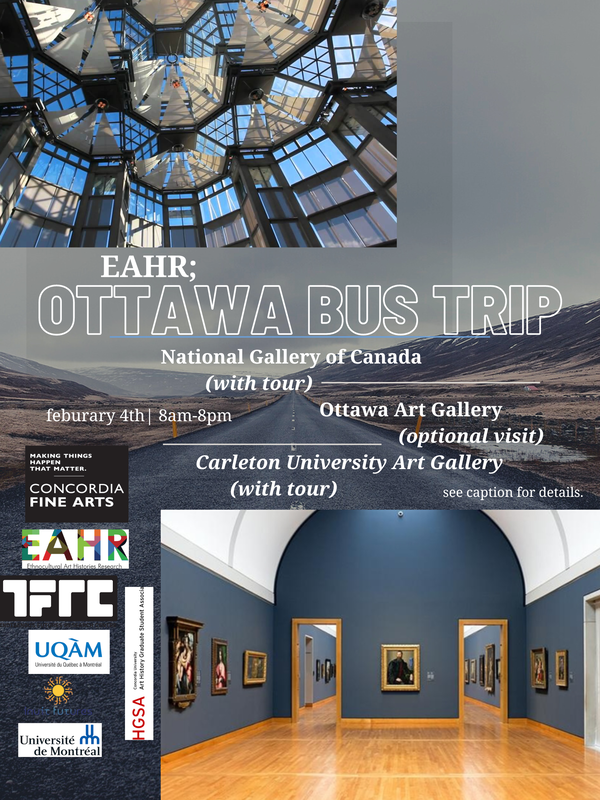
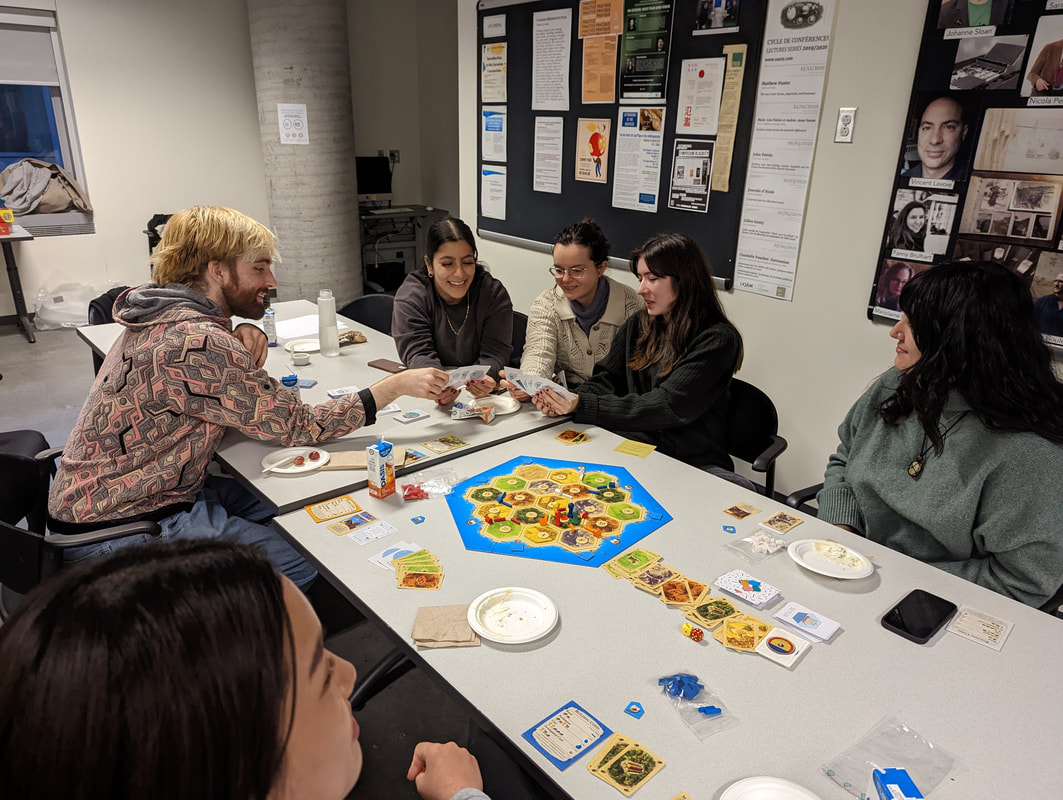
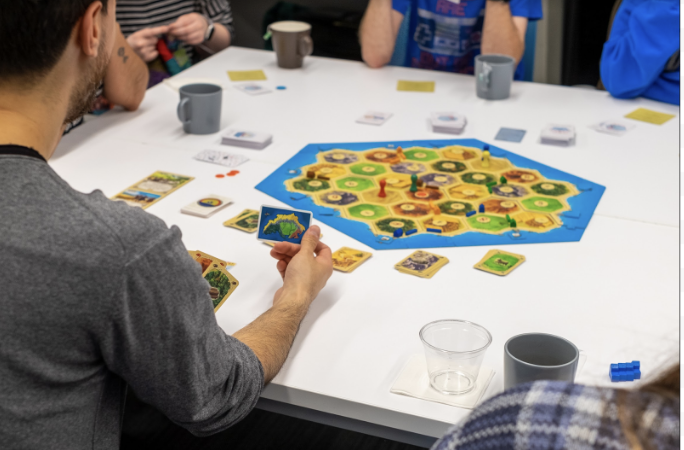
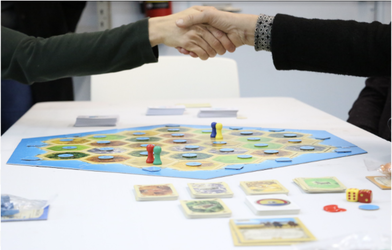
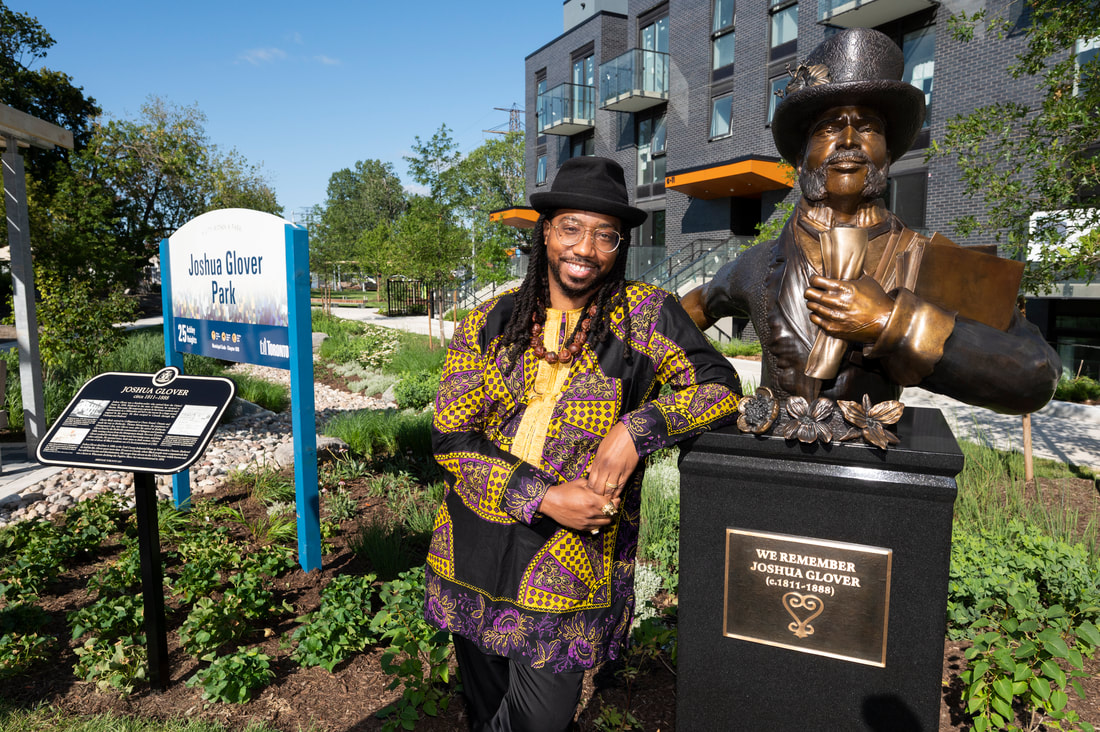
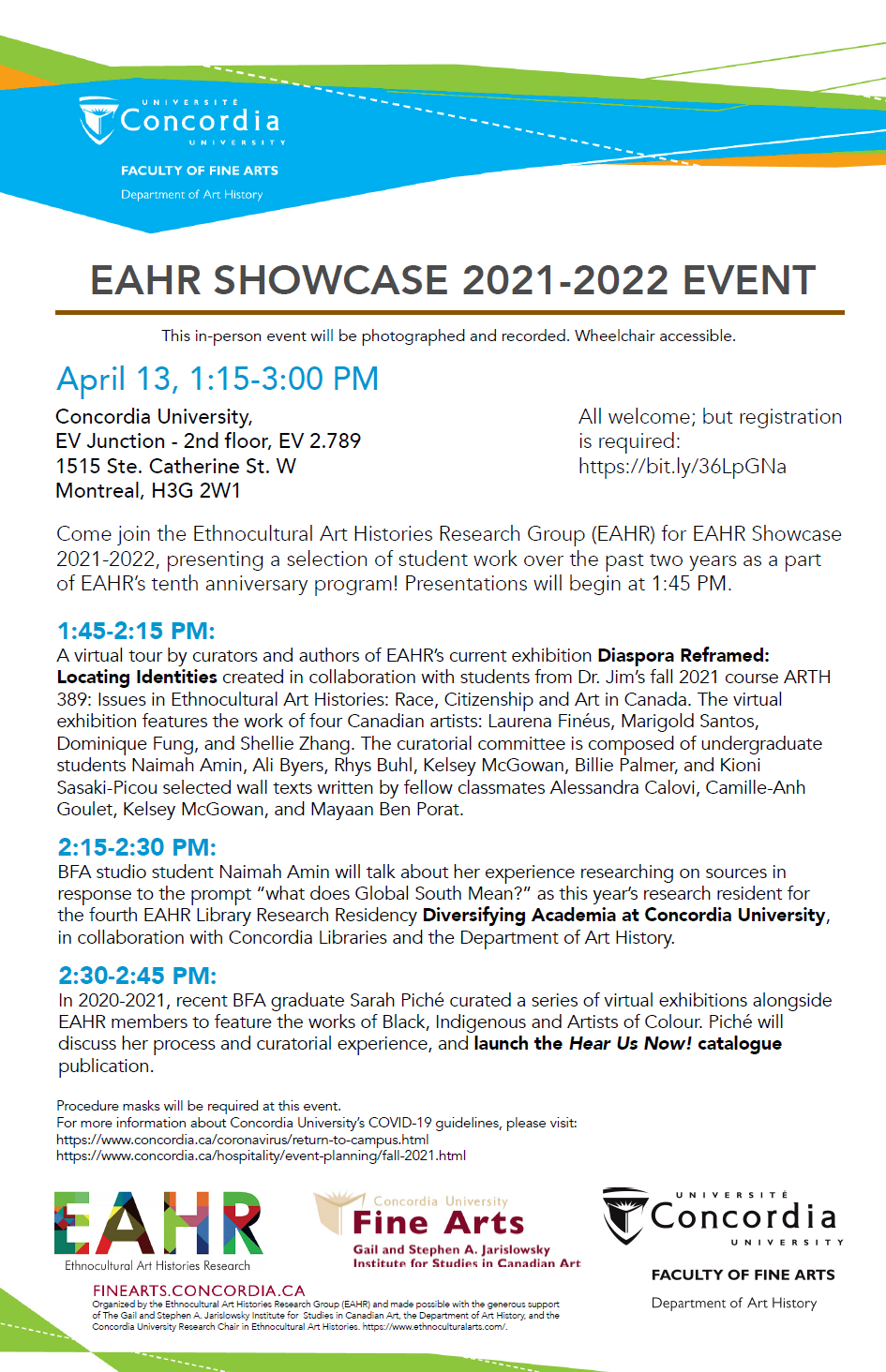
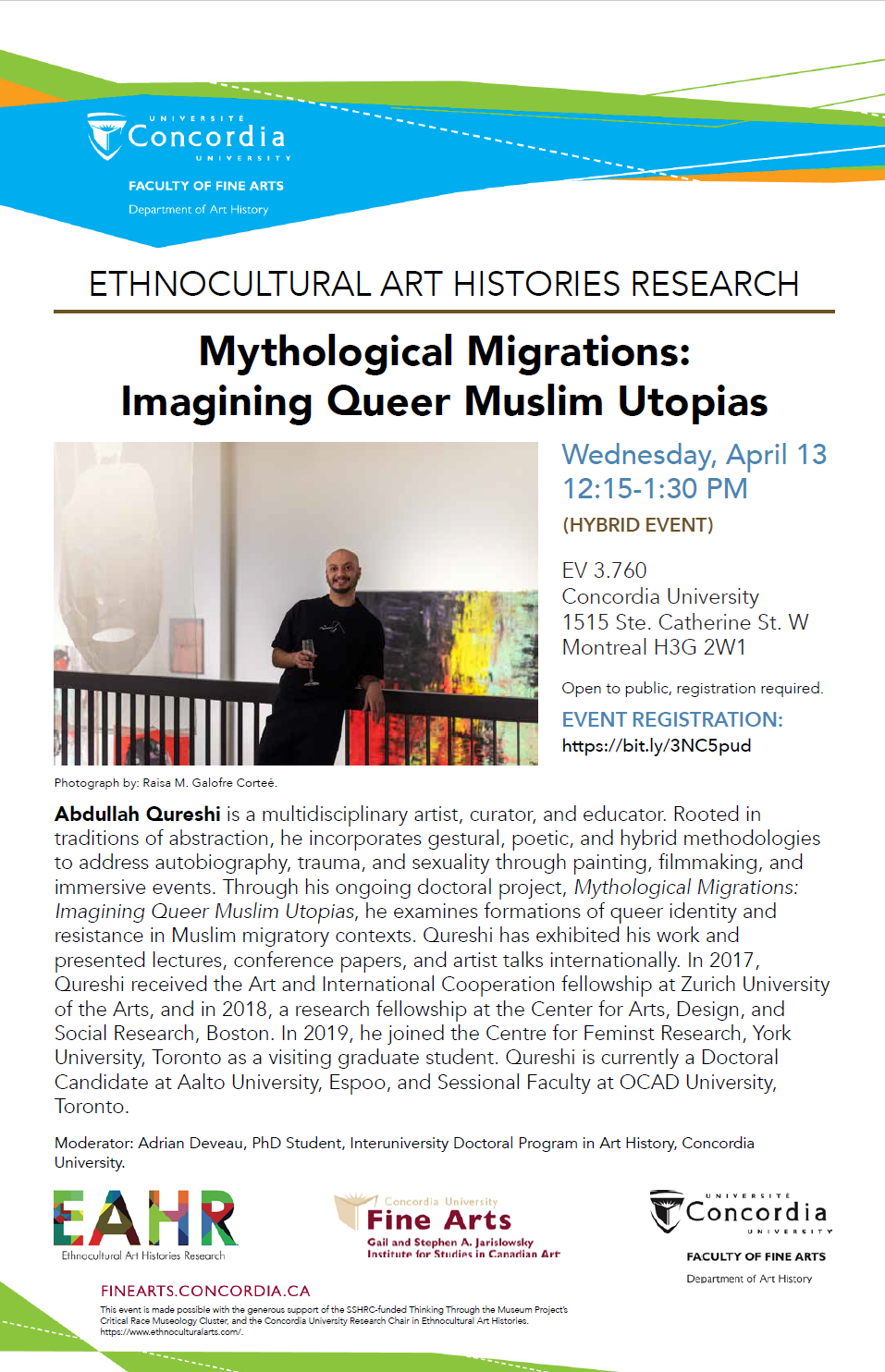
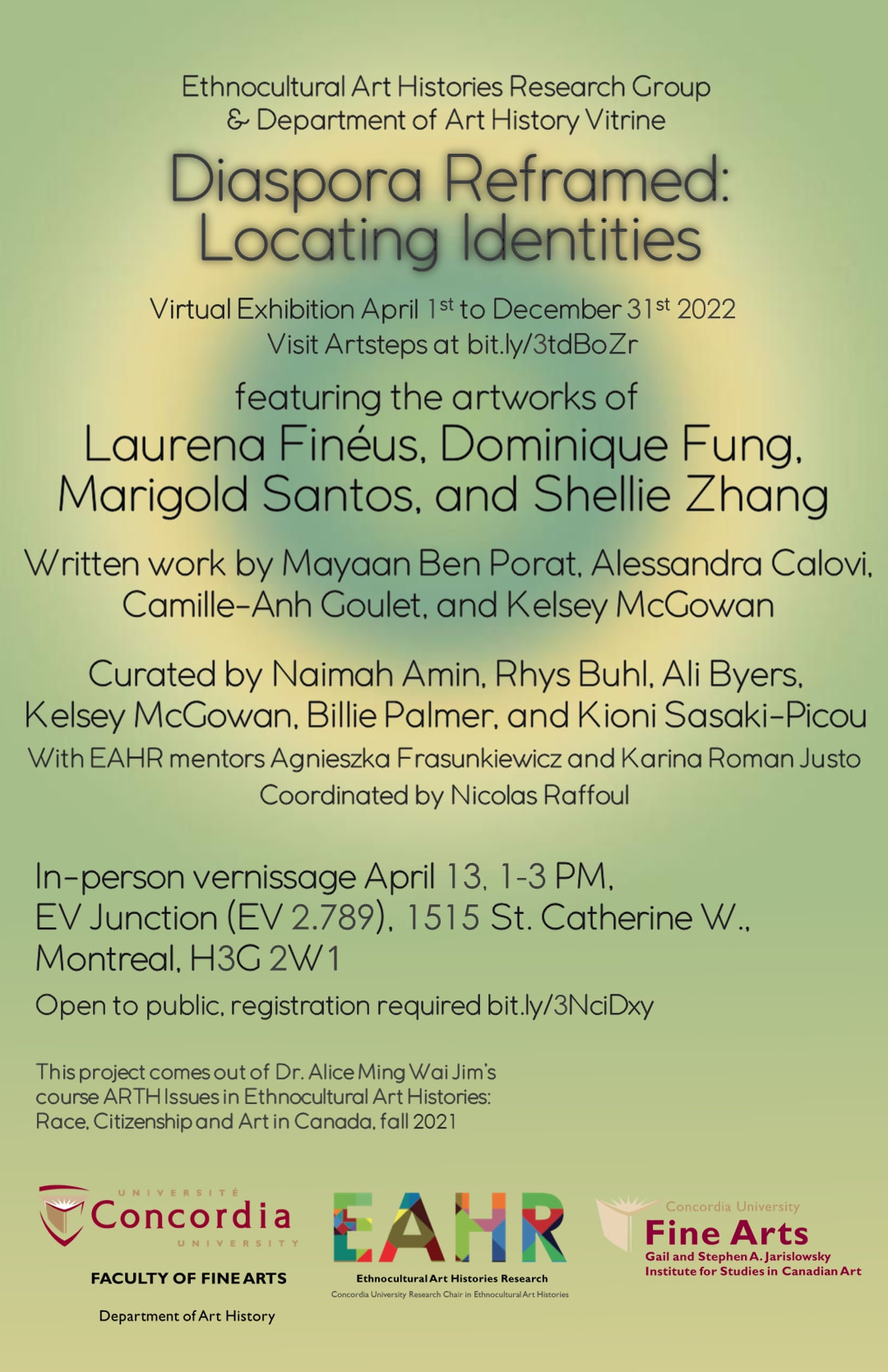
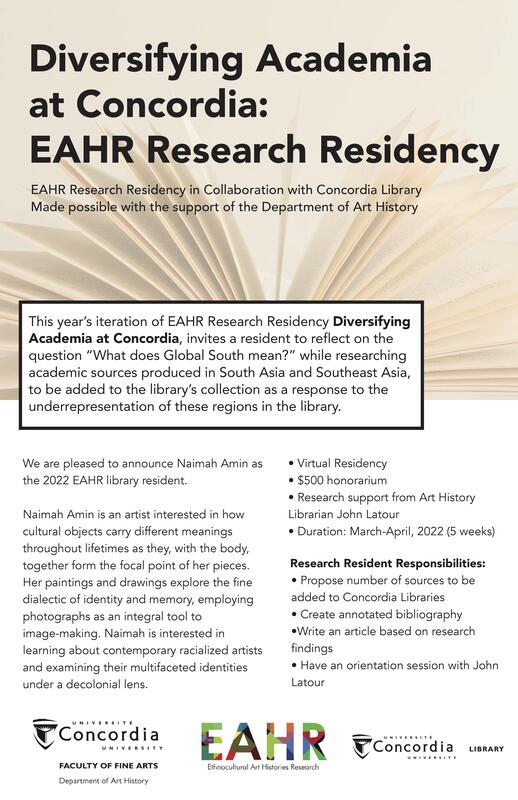
 RSS Feed
RSS Feed